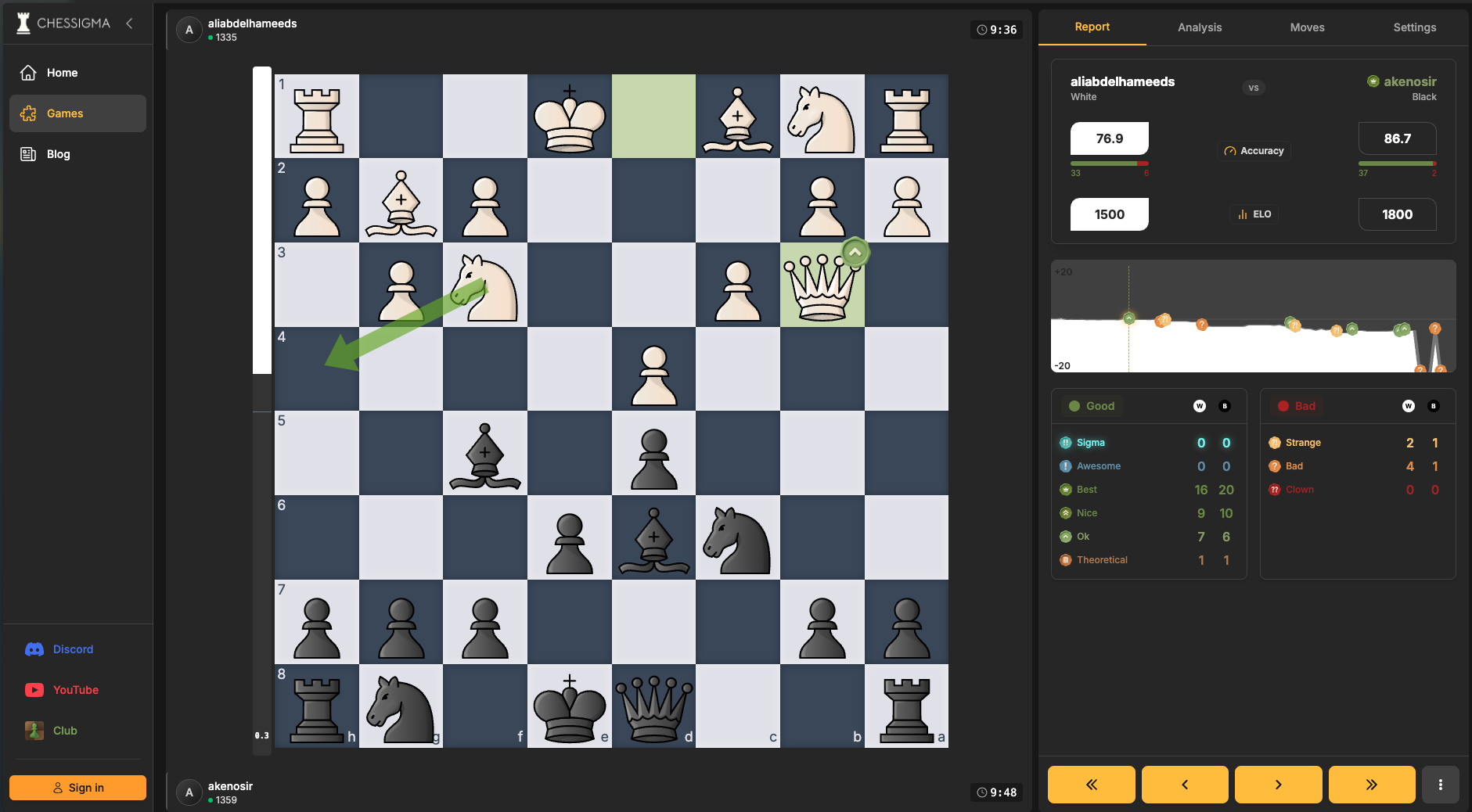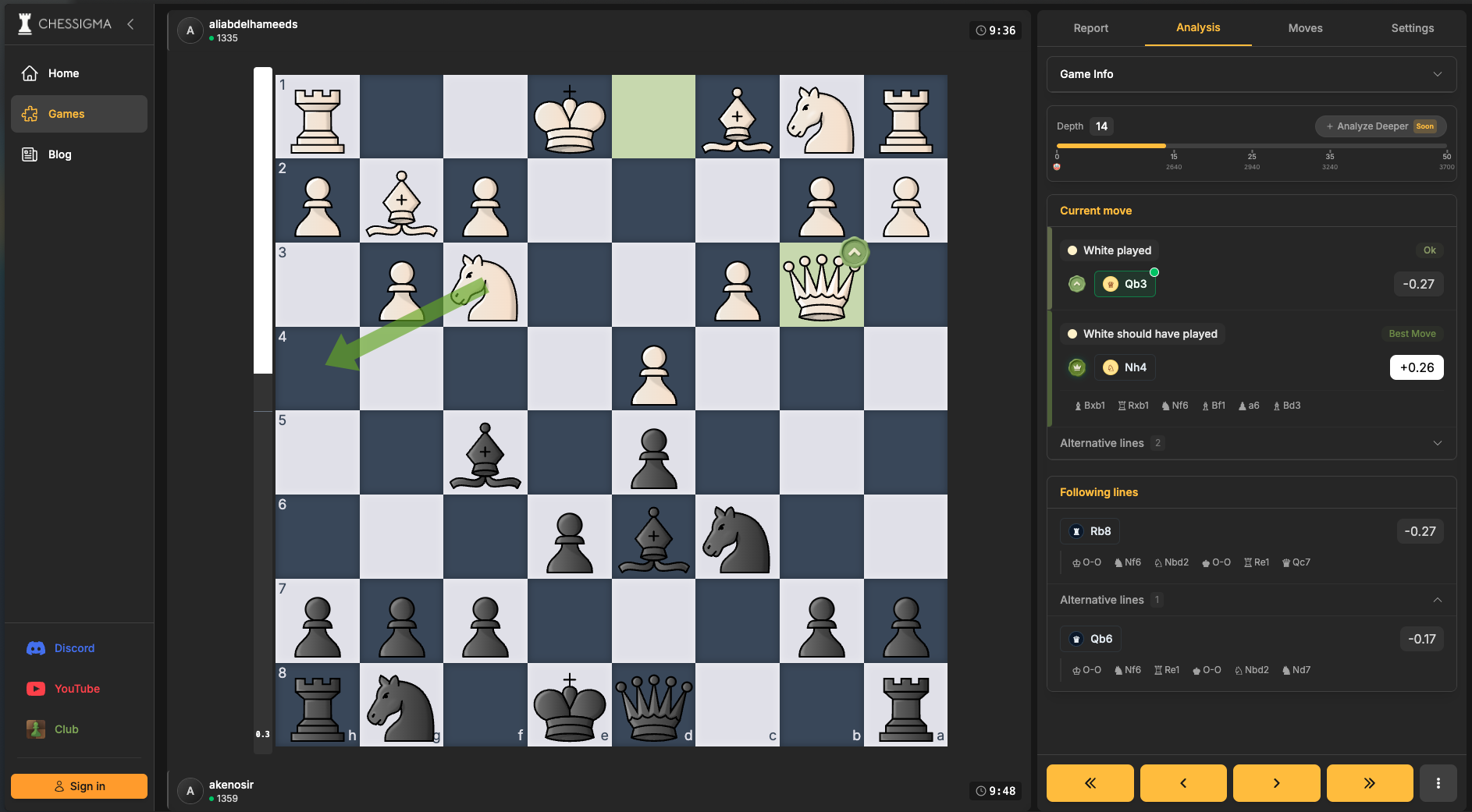How to analyze your chess games: complete guide
Step‑by‑step guide to reviewing chess games with Chessigma: from post‑game reflection to centipawn loss, move labels and training plans.

The fastest way to add rating points isn't another opening line, it's squeezing every lesson out of your own games. In this guide you'll learn a simple, repeatable framework for game review that grandmasters swear by and that you can run in five minutes with Chessigma.
1. Capture your thoughts while they're fresh
Right after the handshake (or the "GG" online) jot down what you were calculating, where you felt confident, and moments you were "just playing moves". These raw notes shine a light on blind spots that engines can't see. A phone voice memo works if you're away from a board.
2. Identify the critical positions
Scroll through the game quickly and bookmark the moves where the evaluation swung ±1.00 or more, you used a lot of time, or the position fundamentally changed (king safety, pawn structure, major trades). Those are the decisions that decide results.
3. Run a "human pass"
Before any silicon, challenge yourself to find improvements for both sides in each critical spot. Write down candidate moves and a short line for each. If you can't explain a move in words, you probably didn't truly understand it during the game.
4. Check with Chessigma (the engine, not the judge)
Now import the game into Chessigma from Chess.com, Lichess or as PGN file. The report panel grades every move from![]() Sigma to
Sigma to![]() Clown and shows your overall accuracy. Use it as asecond opinion, not a verdict. When the engine disagrees with your candidate moves, ask "why?" rather than obediently swapping pieces.
Clown and shows your overall accuracy. Use it as asecond opinion, not a verdict. When the engine disagrees with your candidate moves, ask "why?" rather than obediently swapping pieces.

Understand the numbers
- Centipawn loss (CPL): difference per move compared to the best line. We use this number to classify moves in the categories.
- Accuracy %: Chessigma's scale, running Stockfish 16. Scores vary slightly from other sites and that's expected.
- Depth: Most moves stop at depth 14 for speed; openings cached from the Lichess book go to depth 50.
5. Label your recurring mistakes
Patterns beat positions. After a few reviews you'll notice themes: hanging a back‑rank mate, misplaying opposite‑colored bishop endings, pushing pawn storms too soon. Create tags or a simple spreadsheet (Pattern / Frequency / Fix). Review the list weekly and pick one weakness to train until it disappears.
6. Turn insights into training
For each flagged pattern, build a mini‑curriculum:
- Search the databases for 5 classic games featuring the same motif.
- Create a puzzle set with the exact tactic or positional idea.
- Play training games starting from the critical position.
7. Keep it short, keep it consistent
A five‑minute review after every game beats a two‑hour deep dive once a month. Consistency turns feedback into muscle memory.
FAQ
- Should I analyze wins or only losses?
- Both. Wins hide complacency; you often got away with a bad move.
- How deep is "deep enough"?
- If the best line stays stable for three extra plies, that's usually plenty.
- Is centipawn loss or accuracy more important?
- Track whichever motivates you. They both correlate strongly with rating gain.
Related Reading
The best free chess game analysis tool online
Run a free chess game analysis in one click. Import games from Chess.com, Lichess or PGN files and get an instant game review with Chessigma — the best online chess analyzer.